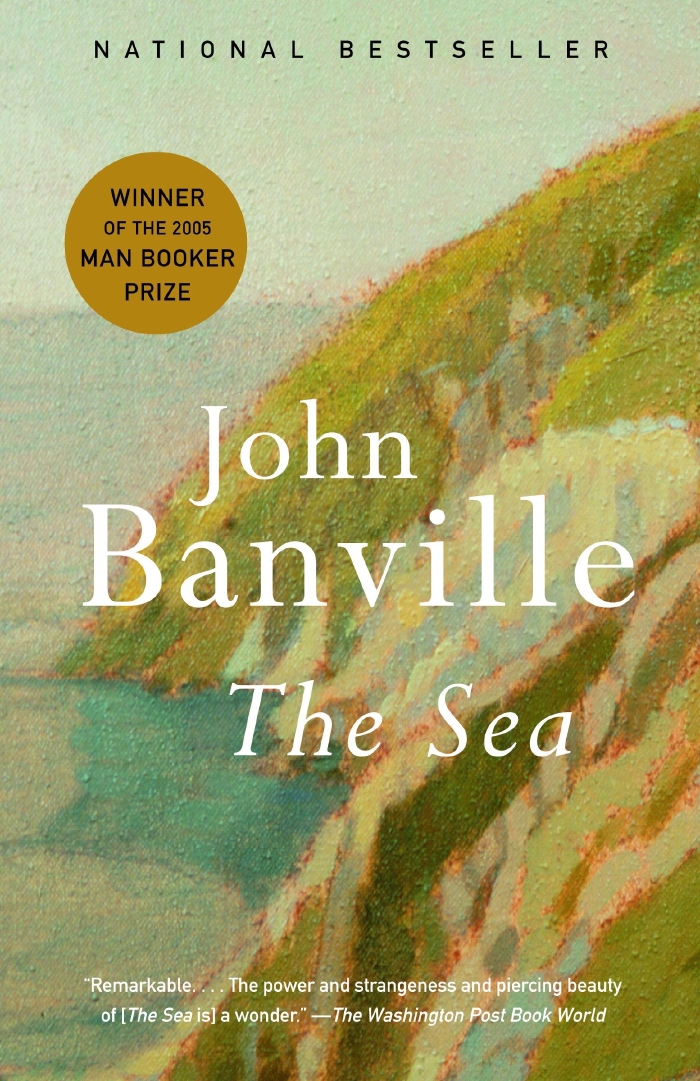The Sea, by John Banville

The person who recommended this novel gave me a single cryptic description: the author writes as an impressionist painter paints. The first few pages of this story dispelled all ambiguity behind this statement. Banville’s sentences are flowery and long-winded and often have a surfeit of punctuation. However, I can’t remember a reading experience in which I was so compelled to reread specific sentences. Each one has a layered quality to it, and gives a sense of how much labor went into crafting it. As the narrator speaks, there are several minute observations tucked between comma pairs over the course of a single sentence. For example:
Hearing me stir he lifted his eyes unhurriedly from the page and turned his head and looked at me, quite composed, and even smiled, though cheerlessly, and enquired as to how I was feeling.
In all honesty, at first this style was offputting. I felt compelled to dog-ear every other page so that I could return to it to review a word of which I questioned the meaning. Without concentration, I would lose track of his winding sentences, and often felt as though the sentence was incorrect grammatically—until I reviewed the sentence multiple times.
However, I soon realized that the style was not a crutch but a craft. Banville’s observations are intricate and exacting, and the nature of his prose seems to argue that in order to communicate such observations, the language too much be exacting and intricate.
Like every good impressionist, he describes everyday moments. Yet in the vivid whirl of description, he elevates them to something momentous. One of the most momentous scenes is one in which the narrator describes a time when he was in the sea. He stands above the surface, looking through the clear water, and glimpses his feet and the sand below. The water then picks him up in a swift current and deposits him a few yards back.
This is the extent of the action, yet in the half a page Banville uses to describe the scene, it swells into one of the most meaningful passages in the entire book. One can anatomize the episode—perhaps as a metaphor for the arbitrary way the world can pick you up and put you elsewhere in a moment’s notice—or one can leave it as just a meticulously worded depiction of a single moment in an ordinary life. Either way, Banville’s precise language makes the moment burn with the intensity of something grand.
The prose reads like it is a product of the narrator’s unfiltered musings, and in this way follows in the Irish tradition of stream of consciousness. But the wording is anything but accidental—reading any of the sentences out loud help reveal just how painstakingly Banville pored over them. No where is this more evident than in the narrator’s descriptions of his own consciousness. He blends the narratives of his adult self and his child self, and details the progression of his consciousness as he grows.
In a particularly memorable passage, the narrator speaks of the exact moment when he knew that he was an individual, and not simply part of “the big Other”. This also speaks to the other theme that he expounds on, which is the limits of memory. Over the course of the novel, he subtly posits the idea that the picture memory paints differs when you have the self-understanding to imbibe memory with meaning. Perhaps this is at the heart of the Impressionist’s dilemma: the meaning of an idea changes once you are able to express it. As for Banville’s The Sea, perhaps what he is saying is that the meaning of a memory changes once you have the words to describe it.
